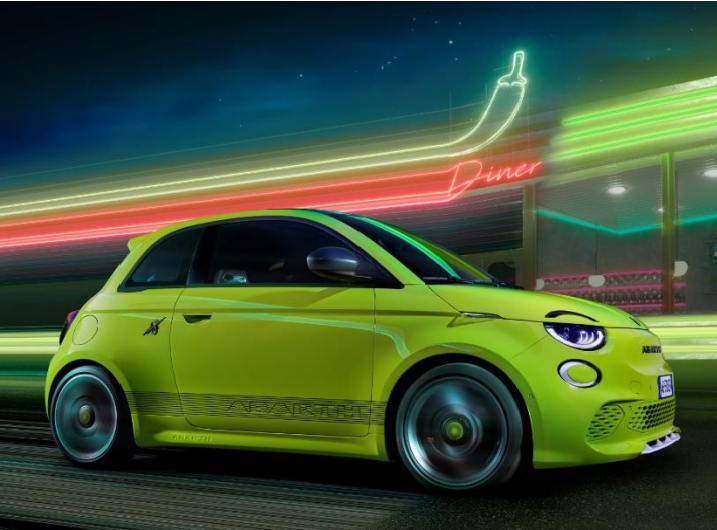It’s getting harder and harder to resist the draw of full-electric vehicles. Most of them seem to be SUVs these days but here’s a Zero Emission supermini, the Peugeot e-208.
Background
In the future, all small cars will need to be developed on platforms that can support full-electric as well as conventional thermic propulsion. Surprisingly, few currently are but the Peugeot 208 is an exception. The brand wants you to pick a powertrain for this model (petrol, diesel or electric) in the same way you’d select a trim option – and it’s the battery-powered variant, the e-208, that we look at here.
It shares all the same engineering we’ve already also seen in the Stellantis Group’s two other small car battery-powered products, the Vauxhall Corsa-e and the DS 3 Crossback E-TENSE, a pair of designs that share this Peugeot’s sophisticated CMP (‘Common Modular Platform’). And those same underpinnings allow for a new generation of ‘big car’-style camera safety systems. It all sounds promising: let’s take a look.
The Peugeot e-208 Driving Experience
Here, as with this model’s cousin the Vauxhall Corsa-e, a 50kWh lithium-ion battery is mated to a 100kW electric motor putting out 136bhp and working through the usual single-speed auto transmission you get with EVs. Like all electric vehicles, this one develops all of its torque at once (there’s 260Nm of it) and this car simply hurls itself away from rest (it takes just a couple of seconds to crest the 30mph mark and 62mph is reached in only 8.1s), disguising the fact that (also like all EVs) this Zero Emissions variant has a bit of a weight problem – that drivetrain adds over 300kgs of bulk. That other small battery-powered little hatches manage this issue a little better is evidenced by the fact that the e-208’s WLTP-rated 225 mile driving range is easily improved upon by the latest versions of the Renault ZOE and the BMW i3.
Still, all of this does represent a brave new world for forward-thinking supermini buyers looking to make the (still rather expensive) switch into all-electric motoring; it seems like only yesterday, after all, that a fully-charged small EV could only manage around half the kind of range you get from this one. Of course, you certainly won’t achieve anything like that kind of operating capability if you get anywhere near this EV’s quoted 93mph top speed. Or if you habitually drive your e-208 in the ‘Sport’ setting that’ll be necessary to release to full 136bhp power output just mentioned. The quoted range figure will only be distantly possible if you instead engage a somewhat restrictive ‘Eco’ mode that drops power output right down to 83bhp. That’s the setting you’ll use in an e-208 around town, an environment in which it makes a strange polyphonic sound at low speeds to warn unwary pedestrians of its impending approach. Above 18mph, all you can hear is a bit of tyre roar from the eco-moulded Michelin rubber.
The Peugeot e-208 Design and Build
The all-electric e-208 is distinguished from what Peugeot calls ‘thermic’-powered models by the adoption of body colouring for the front grille and a more unusual ‘Dichroic’ finish for the lion badge that appears to change colour, depending on your viewing angle. Most versions of this model will be ordered in either ‘GT’ or top ‘GT Premium’-spec, these two top variants recognisable by ‘diamond black’ roof colouring and glossy black wheel arch flares, which streamline the body, making the wheel diameter of the 17-inch wheel rims appear larger. On these plusher versions, those rims are adorned with screw-in customisable inserts which improve the aerodynamics and apparently reduce kerb weight by 3.6kgs.
Inside across the range, there’s the usual 208 ‘i-Cockpit’ driving position format, where you view the instrument binnacle over the upper rim of a tiny steering wheel rather than conventionally through the wheel spokes. Plus, as with other versions of this model, the concept’s been further developed with the addition of a clever 3D instrument binnacle display. What else? Well rear passenger space is slightly compromised by the need to place the powertrain’s battery pack beneath that back seat. But there’s no compromise in boot space, which is 311-litres in size just like any other 208.
The Peugeot e-208 Market and Model
Peugeot obviously thinks it’s going to sell quite a few e-208s (the prediction is 20% of total model mix) because this powertrain is available with every trim level and the top ‘GT’ spec option is exclusive to it. Even in base ‘Active Premium’ form though, an e-208 will set you back around £30,000. In the mid range, there are ‘Allure Premium’ and ‘GT’ models. A top ‘GT Premium’ variant will cost you around £34,500.
Al variants get the ‘3D i-Cockpit configurable 3D head-up instrument panel. Plus you’ll get an electrochrome rear view mirror and automatic climate control functionality for the air conditioning. Quite a few prospective e-208 buyers will be tempted by the sportier look of ‘GT’ or ‘GT Premium’ trim, which offers 17-inch two-tone diamond-cut alloy wheels, plus ‘diamond black’ roof finishing. There’s also gloss black wheel arch extensions, gloss black ‘diffuser effect’ trim for the lower part of the rear bumper, ‘Nera Black’ door mirror caps and dark chrome and chequered trim for the front grille, which has gloss black edging. Top ‘GT Premium’ trim has a cabin embellished with part-alcantara upholstery and both GT version get as standard the brand’s bigger 10-inch centre-dash touchscreen, a display that comes complete with the excellent ‘Connected 3D Navigation’ package.
The Cost of Owning a Peugeot e-208
Peugeot’s aim was for this EV to have a total ownership cost roughly equivalent to what you pay to buy and run an automatic version of the petrol model: well it’s some way off that right at present. Its drivetrain claims to be state-of-the-art for a small car, though its WLTP-certified range of 225 miles is bettered in the class by the BMW i3 and the Renault ZOE. It’s worth pointing out though, that both these rivals cost significantly more and that a more closely-priced Zero Emission rival, the MINI Electric can offer a WLTP range of only 144 miles. Bear in mind that as with all Evs, the quoted range figure will drop considerably in winter weather or over long motorway journeys – in the case of the e-208 to around 150 miles. If you’re an e-208 owner, you’ll need to know that getting anywhere near the quoted range figure will necessitate staying in the powertrain’s provided ‘Eco’ mode – activating its ‘Sport’ mode setting will reduce your range by around 10%.
What about charging your e-208? With a wallbox in place in your garage, a full charge from empty will take seven and-a-half hours. With a public 50kW Rapid Charger, the replenishment time to charge from 15 to 80% is 45 minutes. If you’re fortunate enough to find a 100kW Rapid Charger, that falls to 30 minutes. At the other extreme, if you happen to be somewhere you can only charge from a domestic supply using an ordinary 3-pin plug (and the optional 3-pin plug lead that costs extra with this car), the charging replenishment time would be a yawning 20 hours. As an e-208 buyer, your dealer will also give you the option to pay a subscription for a so-called ‘Mobility Pass’. That’ll enable you to borrow a conventional petrol or diesel-powered car from the brand for those times when you might need to undertake a longer or more complex journey – holiday times for instance.
Summary
So how successful has Peugeot been with this e-208 in terms of what it describes as “unboring the future”? Well, we think you’ll be impressed. Other sector competitors can go further on a single charge, but we think that this model’s operating range will (unlike that of segment rivals like the Honda e and the MINI Electric) be quite sufficient for the average family’s needs.
There may be a few supermini buyers who don’t like the cabin layout, want something better suited to cornering their door handles or who might prefer a premium brand – but we’re guessing they’ll be in the minority. Most will recognise that in this e-208, Peugeot has delivered an EV supermini you could really bond with. Glug, glug, glug, plug: bring it on. If you are interested in the Peugeot e-208 enquire now.





